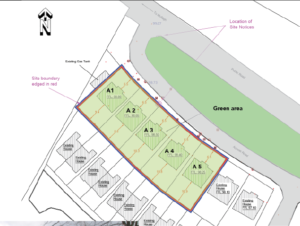The lack of housing across the country is a major issue, as people are aware. It is likely to remain a major issue for at least the next five years. The Government is attempting to address the lack of housing by providing social and affordable housing, via local authorities and approved housing bodies (“AHB”).
Government provided housing falls into three main channels being.
- social housing.
- affordable housing; and
- long term leases.
In the first two channels the local authority or the AHB will own the property while in the third channel, the local authority or the AHB leases the property for 20 or 25 years.
SOCIAL HOUSING
Every local authority in the country has a sizeable housing list. These lists typically include young families, and individuals who are either living with family members, are in temporary accommodation, or are homeless. They have no source of income to allow them rent or buy their own homes. All local authorities, either directly or through AHBs, are attempting to source new homes for these people. In a lot of cases they are entering into contracts with developers for large scale developments, and in some cases, they are purchasing houses which were originally intended for the open market. No matter which political parties are or will be in power, this process is likely to continue for a significant period of time.
Although the local authorities or AHBs will enter into contracts with developers for both small- and large-scale developments, they will only pay for the finished houses when they are handed over. Therefore, the developer has to fund the build costs. That is where we in Property Bridges, and you as our lenders have a role to pay. We are currently assessing projects across the country.
AFFORDABLE HOUSING
Over the last 6 months, the option of affordable housing has opened out. It is typically provided by the AHBs. It is aimed at the section of the community that are not on local authority housing lists and may typically be renting privately. This cohort of people are in employment; however, they do not have the salary levels to achieve a mortgage, which would allow them purchase a house on the open market. This model aims to help people by reducing the costs of the underlying house and a related mortgage, thereby letting them get access to housing.
From a developer’s perspective, there is no difference in the provision of social or affordable housing. They will enter into a contract with an AHB to provide a specific number of houses, at agreed specifications and a contracted price. The issue of funding the build costs still remains, and again this is where we in Property Bridges, and you as our lenders can step in.
LONG LEASES
The final channel for government supported housing is where a local authority or an AHB puts in place a 20 or 25 lease over a development.
We are beginning to see more development proposals with this as the method of housing provision. A developer will come to us looking for funding to construct a development. He or she will have an agreement in place with a local authority or an AHB to lease the units in the development for a period of 20 or 25 years, at a rent of up to 90% of the market rent. Our loan will be repaid when the developer sells the properties, with the leases in place, typically to an investment fund who want the long-term state backed income which the lease provides.
Read Part Two Here.



